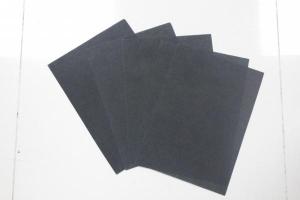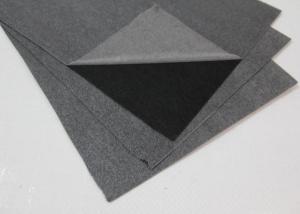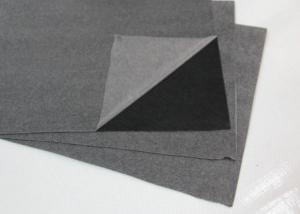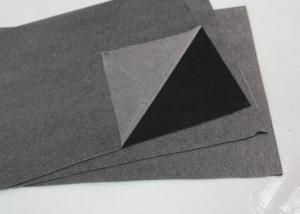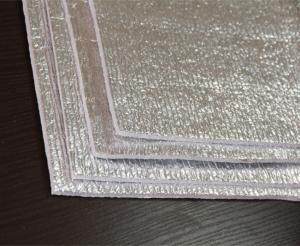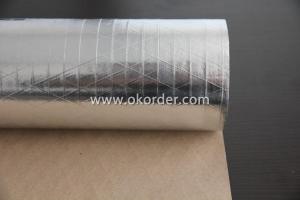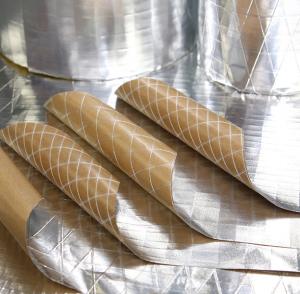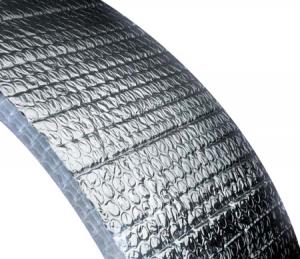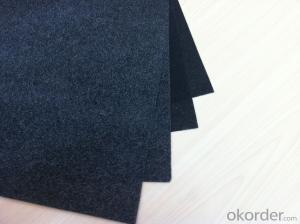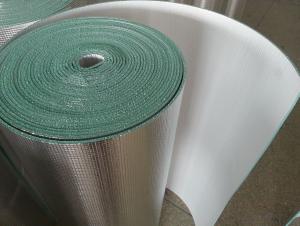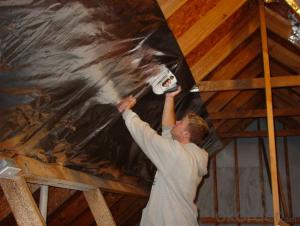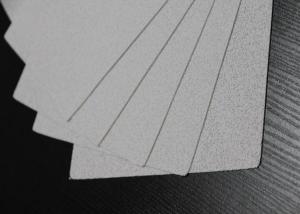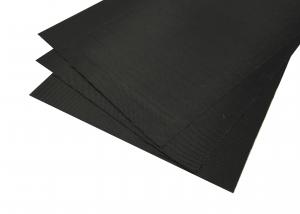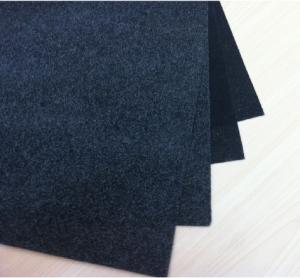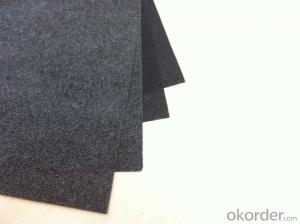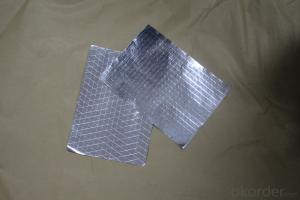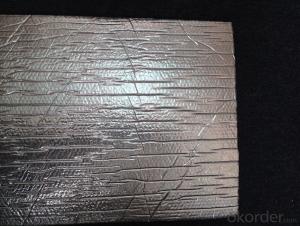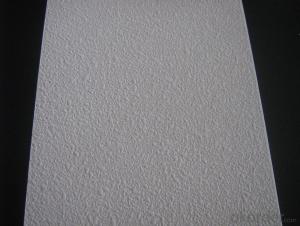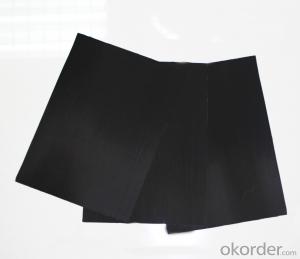BLACK FIBERGLASS CLOTH BFC-001
- Loading Port:
- China Main Port
- Payment Terms:
- TT or L/C
- Min Order Qty:
- 10000M2 m²
- Supply Capability:
- 50000M2 Per Week m²/month
OKorder Service Pledge
OKorder Financial Service
You Might Also Like
1. Specification of Black Fiberglass Cloth BFC-001
|
Specification | ||
|
ITEM |
UNIT |
VALUE |
|
Weight of the tissue |
g/m2 |
65 |
|
Weight of the Finished Product |
g/m2 |
65 +25 PE |
|
Thickness |
mm |
0.42 |
|
Fusion Temperature |
℃ |
≦130 |
|
Oxygen Index Number |
% |
≥32 |
|
Tensile Strength MD |
n/5cm |
125 |
|
Tensile Strength CMD |
n/5cm |
105 |
SIZE:
Width: 0.6m---1.3m
Length: 100m-1000m
Core I.D.: 3"(76mm ±1)
Based on order, special sizes are also available.
MSDS:No harm for body and environment, non-volatile product.
Remarks:
1. The data above are typical results and subject to change without notice.
2. Tolerance: Weight and Thickness: ±10%; Width: ±3mm; Length: ±0.5%.
3. The products should be stored at room temperature, kept from wet and kept away heat source.
4. Good appearance without stain, oxidation, mildew.
5. The users should take test and do trial-application on the above products before coming into application so as to witness and ensure suitability for their special purpose and technique.
2. Application of Black Fiberglass Cloth BFC-001
Fiberglass facing is good at fireproof, mildew resistant, damp proof and strong air permeability. After laminated with glass wool or rock wool, the physical properties is excellent such as hat preservation, noise elimination, fire retardant, extinction,etc.
3. Packaging & Delivery of Black Fiberglass Cloth BFC-001
Depends on the clients' requirements and the production conditions.
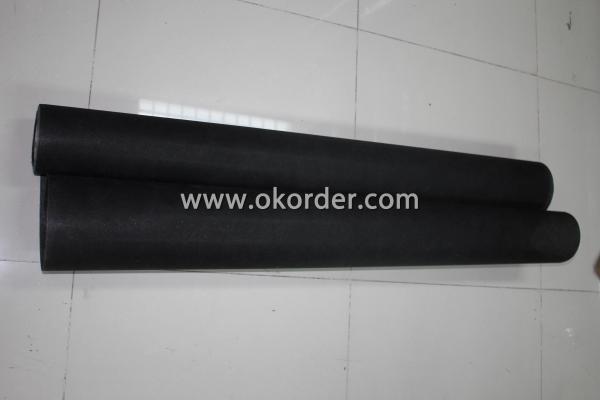
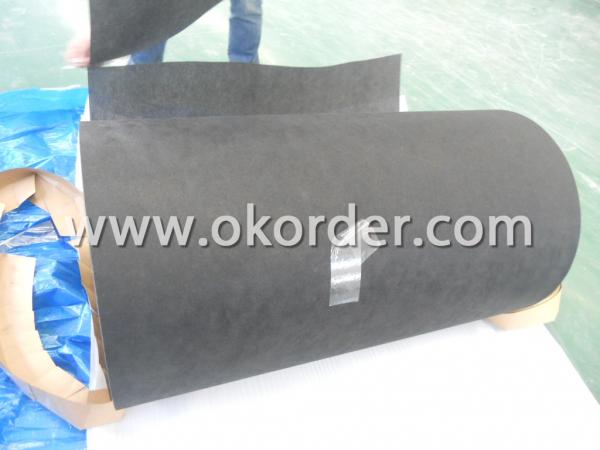
- Q:Can fiberglass facing be used in both residential and commercial buildings?
- Fiberglass facing is applicable for use in both residential and commercial buildings. This versatile material offers numerous advantages, including thermal insulation, moisture resistance, and soundproofing. Its diverse properties make it suitable for various applications in both residential and commercial settings. In residential buildings, fiberglass facing can be utilized in insulation products for walls, ceilings, and attics. By doing so, it contributes to the enhancement of energy efficiency and reduction of heating and cooling expenses. Furthermore, it can be integrated into residential HVAC systems to improve air quality and minimize noise transmission. Similarly, in commercial buildings, fiberglass facing can be incorporated into insulation products for walls, roofs, and HVAC ductwork, providing the same benefits as in residential settings. Moreover, it can be utilized in commercial acoustic panels and soundproofing systems to diminish noise levels in offices, conference rooms, and other commercial spaces. Overall, fiberglass facing is an adaptable material that effectively enhances insulation, moisture resistance, and soundproofing properties in both residential and commercial buildings.
- Q:How is fiberglass facing installed?
- Installing fiberglass facing typically involves a few simple steps. Firstly, ensure that the surface where the fiberglass will be placed is clean, dry, and free from any dust or debris. This is important to ensure that the facing adheres properly. Next, carefully unroll the fiberglass facing and cut it to the desired size, leaving some extra material on each side for complete coverage. Position the facing over the surface and firmly press it down, starting from the center and moving towards the edges. To securely hold the fiberglass facing in place, apply adhesive or adhesive tape along the edges to create a tight seal. Smooth out any wrinkles or air bubbles that may have formed during installation. In certain situations, mechanical fasteners like staples or nails may be necessary to further strengthen the fiberglass facing, especially in areas prone to high impact or requiring extra reinforcement. Overall, installing fiberglass facing is a relatively straightforward process that demands attention to detail and proper surface preparation. By following these steps, you can ensure a successful installation that offers durability and protection.
- Q:Does fiberglass facing help with soundproofing?
- Yes, fiberglass facing can help with soundproofing. Fiberglass has excellent sound absorption properties, and when used as a facing material, it can enhance the soundproofing capabilities of walls, ceilings, or other surfaces. The facing acts as a barrier, reducing the transmission of sound waves through the material, thereby reducing noise transfer between spaces.
- Q:Can fiberglass facing be used in high-temperature applications?
- No, fiberglass facing cannot be used in high-temperature applications. Fiberglass is a type of reinforced plastic material that is known for its excellent thermal insulation properties and resistance to corrosion. However, it has a low melting point and is not suitable for use in high-temperature environments. When exposed to high temperatures, fiberglass can melt, warp, or degrade, compromising its structural integrity and insulation properties. Therefore, it is important to choose alternative materials specifically designed for high-temperature applications, such as ceramic fiber or metal facing, to ensure safety and optimal performance.
- Q:What are the potential drawbacks of using fiberglass facing?
- Using fiberglass facing in various applications has several potential drawbacks. Firstly, one major concern is the health hazards associated with fiberglass. Tiny glass fibers in fiberglass can easily become airborne when disturbed, leading to respiratory issues, skin irritations, and long-term health problems like lung diseases. Therefore, it is necessary to take proper safety precautions, such as wearing protective clothing and masks, when working with fiberglass. Another drawback is the degradation of fiberglass over time. Exposure to extreme heat or sunlight can cause the material to become brittle and crack, resulting in reduced insulation properties and decreased durability. Additionally, fiberglass is prone to moisture absorption, leading to deterioration and loss of effectiveness. Moreover, fiberglass facing may not be as effective as alternative materials in certain applications. For instance, it may not provide sufficient insulation in high-humidity areas or where there is a risk of water leakage. In such cases, materials like foam or foil-faced insulation may be more suitable. In addition, fiberglass facing can be costlier than other options. While the fiberglass itself is relatively affordable, the installation and maintenance costs can be higher due to the need for specialized equipment and safety measures. This can make fiberglass facing less cost-effective, particularly for smaller projects or those with limited budgets. Lastly, working with fiberglass facing can be challenging. The material is rigid and difficult to cut, shape, and install correctly. It requires specific tools and expertise, which may limit its accessibility for DIY enthusiasts or inexperienced individuals. To summarize, the potential drawbacks of using fiberglass facing include health hazards, degradation over time, limited effectiveness in certain applications, higher costs, and the difficulty of working with the material. It is crucial to carefully consider these factors before choosing fiberglass facing and to ensure proper safety measures are in place when working with it.
- Q:Does fiberglass facing require regular maintenance?
- Regular maintenance is not required for fiberglass facing. Fiberglass is a resilient material that can resist various environmental elements, such as moisture, UV rays, and pests. Unlike other materials, it doesn't corrode, rot, or decay, eliminating the need for frequent painting or sealing. Nevertheless, it's crucial to keep the fiberglass facing clean and clear of dirt and debris to preserve its appearance and performance. To maintain its good condition, regular cleaning with mild detergent and water should suffice. Additionally, prompt repair of any damage or cracks in the fiberglass facing is necessary to prevent further complications. In conclusion, fiberglass facing is a low-maintenance choice that can endure for many years with minimal upkeep.
- Q:Fiberglass Felt Polyester Powder Adhesive Details
- The continuous raw silk mats are formed by the process of drawing the glass precursor or the continuous filament which is released from the original cylinder in the form of a 8-inch fabric on a continuous moving web and bonded with a powder binder. Continuous fiberglass filament fiber in the fiber is continuous, so the composite material to enhance the effect of shorter cut felt good. Mainly used in the pultrusion method
- Q:China's glass fiber product code is what?
- The code name of the song, for example, the order: ???????????? C C 8-36 × 2 × 3 S 110 ???????????????????????????????????? Twist (twist / m) ???????????????????????????????????? Twist ???????????????????????????????????? And twist the number of shares ???????????????????????????????????? Number of shares released ???????????????????????????????????? Original yarn density (g / 1000m) ???????????????????????????????????? Single fiber nominal diameter (m?) ???????????????????????????????????? Continuous glass fiber ???????????????????????????????????? Alkaline glass fiber Description: ① twist to S that the right twist, Z said left twist:
- Q:Are there different types of fiberglass facing available?
- Yes, there are different types of fiberglass facing available. These can include woven fiberglass fabric, chopped strand mat, and fiberglass mesh, each with its own specific characteristics and uses.
- Q:Is fiberglass facing resistant to moisture or water damage?
- Yes, fiberglass facing is resistant to moisture and water damage. Fiberglass is composed of fine glass fibers woven together, which creates a strong and durable material. These fibers do not absorb moisture, making fiberglass facing highly resistant to water damage. It is commonly used in applications where moisture or water exposure is expected, such as in bathrooms, kitchens, and outdoor areas. Additionally, fiberglass facing is also resistant to mold and mildew growth, further enhancing its ability to withstand moisture.
1. Manufacturer Overview |
|
|---|---|
| Location | Jangsu, China |
| Year Established | 1999 |
| Annual Output Value | Above US$0.3 billion |
| Main Markets | 0.00% Mid East 15.00% Northern Europe 15.00% North America 10.00% Eastern Asia 20.00% Africa 0.00% Eastern Europe 20.00% Southeast Asia 0.00% Oceania 0.00% Western Europe 0.00% Southern Europe 0South east asia;North America |
| Company Certifications | ISO 9001:2008 |
2. Manufacturer Certificates |
|
|---|---|
| a) Certification Name | |
| Range | |
| Reference | |
| Validity Period | |
3. Manufacturer Capability |
|
|---|---|
| a)Trade Capacity | |
| Nearest Port | Shanghai |
| Export Percentage | 41% - 50% |
| No.of Employees in Trade Department | 20 People |
| Language Spoken: | English; Chinese |
| b)Factory Information | |
| Factory Size: | Above 100,000 square meters |
| No. of Production Lines | Above 4 |
| Contract Manufacturing | OEM Service Offered; Design Service Offered |
| Product Price Range | Average |
Send your message to us
BLACK FIBERGLASS CLOTH BFC-001
- Loading Port:
- China Main Port
- Payment Terms:
- TT or L/C
- Min Order Qty:
- 10000M2 m²
- Supply Capability:
- 50000M2 Per Week m²/month
OKorder Service Pledge
OKorder Financial Service
Similar products
New products
Hot products
Related keywords
